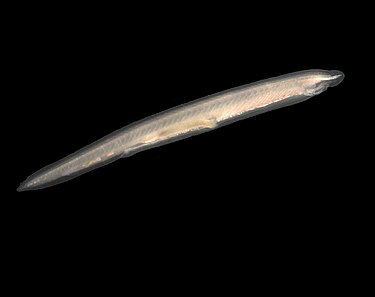
lancelets (from "lancet"), also known as amphioxus, comprise some twenty-two species of fish-like marine chordates with a global distribution in shallow temperate (as far north as Scotland)[2] and tropical seas, usually found half-buried in sand. They are an important object of study in zoology as they provide indications about the origins of the vertebrates. Lancelets serve as an intriguing comparison point for tracing how vertebrates have evolved and adapted. Although lancelets split from vertebrates more than 520 million years ago, their genomes hold clues about evolution, particularly how vertebrates have employed old genes for new functions.[4] They are regarded as similar to the archetypal vertebrate form..[
No comments:
Post a Comment